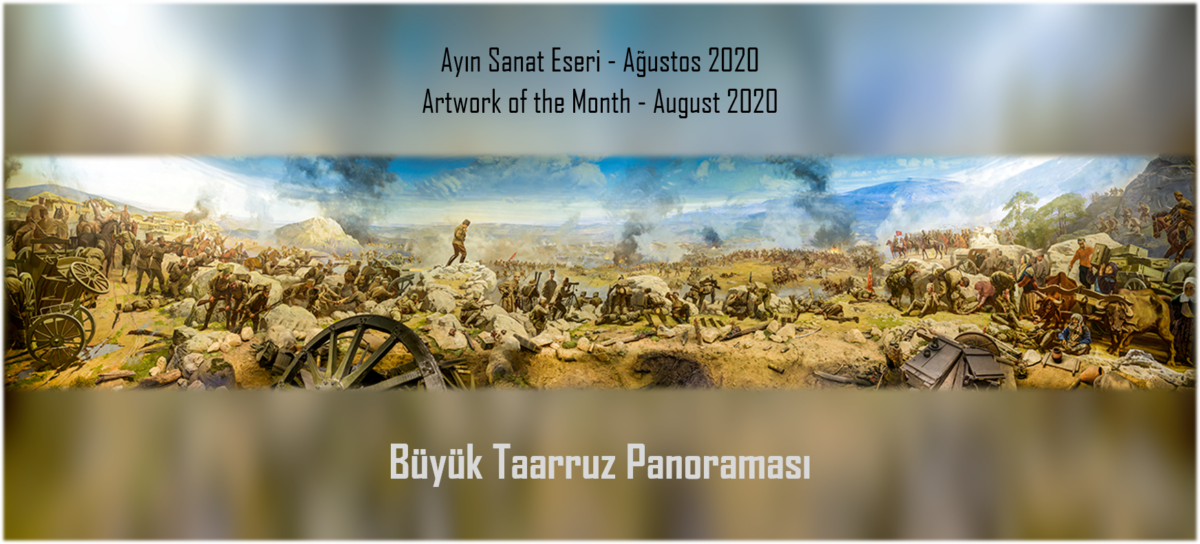“Sakarya Meydan Muharebesi sonrasında Türk ordusunun düşmanı tamamen Anadolu’dan atması için büyük bir taarruza geçmesi gerekiyordu. Ordular takviye edildi. Cepheye asker ve silah sevk edilerek Başkomutan Gazi Mustafa Kemal Paşa’nın inisiyatifiyle taarruz kararı alındı.
Taarruz planına göre düşman orduları Afyonkarahisar güneybatısından kuzeye doğru kuşatılıp, İzmir’le bağlantısı kesilerek yok edilecekti. Büyük Taarruz, Gazi Mustafa Kemal tarafından 26 Ağustos 1922 sabahı Kocatepe’den başlatıldı. Türk ordusunun üstün muharebe yeteneği ile 30 Ağustos’ta Başkomutan Meydan Muharebesi kazanıldı. Başkomutan Gazi Mustafa Kemal Paşa 01 Eylül 1922’de takip harekâtı ile İzmir’e doğru ilerleyen birliklere tarihî “Ordular, ilk hedefiniz Akdeniz’dir. İleri!” emrini verdi.
Büyük Taarruz boyunca sırasıyla Afyonkarahisar, Uşak, Manisa ve nihayet 09 Eylül 1922’de İzmir düşmandan kurtarıldı. Birinci Dünya Savaşı sonundaki işgallere karşı başlayan Türk Kurtuluş Savaşı 09 Eylül 1922’de düşman ordusunun İzmir’den denize dökülmesi neticesinde zaferle sona ermiştir.
Panoramanın bu bölümünde Başkomutan Gazi Mustafa Kemal Paşa 26 Ağustos sabahı Kocatepe’de resmedilmiştir. Hemen önünde Batı Cephesi Komutanı İsmet Paşa, Garp Cephesi Kurmay Başkanı Kurmay Albay Asım (GÜNDÜZ) ve 1’inci Ordu Komutanı Nurettin Paşa yer alıyor.
Panoramada, “Türkler bu tahkimatı altı ayda geçebilirlerse bir günde geçtik diye övünebilirler.” denilen fakat Türk ordusunun bir günde geçtiği tahkimat hem resim hem de üç boyutlu ortamda canlandırılmıştır.
Panoramanın bu bölümünde elinde sancakla yatan şehidin hikâyesi şöyledir:
‘Mustafa Kemal Paşa 31 Ağustos 1922 günü Başkomutan Meydan Muharebesi’nin kazanılması sonrasında muharebe sahasını gezerken bir şehit sancaktarı görür. Bu olaydan çok etkilenen Mustafa Kemal, Dumlupınar’da bu olayı simgeleyen bir anıtın yapılmasını ister. 30 Ağustos 1924 tarihinde bizzat kendisi tarafından temeli atılan bu anıta “Şehit Sancaktar Mehmetçik Anıtı” ismi verilir.’
Panoramanın son bölümünde Türk halkının ordusunun yanında yer alışı ve Türk kadınının fedakârlıkları anlatılmıştır.”[1]
***
“After the Battle of Sakarya, the Turkish Army had to start an attack to sweep away the enemy troops from Anatolia. Therefore, the troops were strengthened and prepared, a great number of soldiers and ammunition were transferred to the Turkish fronts, then, an attack decision was made with the initiative of Ghazi Mustafa Kemal Pasha.
According to the attack plan, the Greek troops would be surrounded beginning from southwest of Afyonkarahisar towards the north, then their contact with Izmir would be intercepted. The Great Offensive began on August 26, 1922, from the Kocatepe Hill. The Battle of Commander-in-Chief was won on August 30 thanks to the outstanding combat capability of the Turkish army. On September 1, 1922, Mustafa Kemal Pasha gave the troops moving towards İzmir and chasing the enemy his historical order: “Armies, your first target is the Mediterranean. Go forward!”
Throughout the Great Attack, Afyonkarahisar, Uşak, and Manisa were freed from the enemy and finally, İzmir was saved from the enemy on September 9, 1922. The Turkish War of Independence starting in response to the invasions at the end of World War I was won with a decisive victory by throwing the Greek army into the sea.
In this part of the panorama, Mustafa Kemal Pasha is portrayed in Kocatepe on the morning of August 26. Just before him, Western Front Commander İsmet Pasha, Western Front’s Chief of Staff Colonel Asım (GÜNDÜZ) and First Army Commander Nurettin Pasha are seen.
In the panorama, the fortress which was said that “if the Turks would be able to surpass this fortification in six months, they could boast as if they surpassed it in one day” that was, however, surpassed by the Turkish army in one day, is represented both in painting and 3-dimensional environment.
In this part of the panorama, the story of a martyr lying with the flag in hand is:
‘While Mustafa Kemal Pasha, following the victory of Battle of Commander-in-Chief, was wandering around the battlefield on August 31, 1922, he sees a martyred standard-bearer. Deeply affected by this scene, Mustafa Kemal requests that a monument be built to symbolize this. This monument, foundation of which was laid by Mustafa Kemal Pasha personally on August 30, 1924, is called “Martyr Mehmetçik Monument”.
In the last part of the panorama, the strong support that the Turkish nation gave to its army and the self-sacrifice of Turkish women are portrayed.”[2]
[1] Metin, Anıtkabir Komutanlığı resmi internet sitesi Atatürk ve Kurtuluş Savaşı Müzesi alt başlığında bulunan Panoramalar ve Yağlı Boya Tablolar bölümünden alınmıştır. Bkz. “Panoramalar ve Yağlı Boya Tablolar”, Anıtkabir Komutanlığı, https://www.anitkabir.tsk.tr/03_muzeler/panoramalar_ve_yagli_boya_tablolar.html. (E.T: 27.08.2020)
[2] The text is quoted from the Panoramas and Paints section under the title of Atatürk and War of Independence Museum on the official website of the Anıtkabir Command. For the other details “Panoramas and Paints”, Anıtkabir Komutanlığı, https://www.anitkabir.tsk.tr/03_muzeler/panoramalar_ve_yagli_boya_tablolar.html. (Accessed: 27.08.2020)

